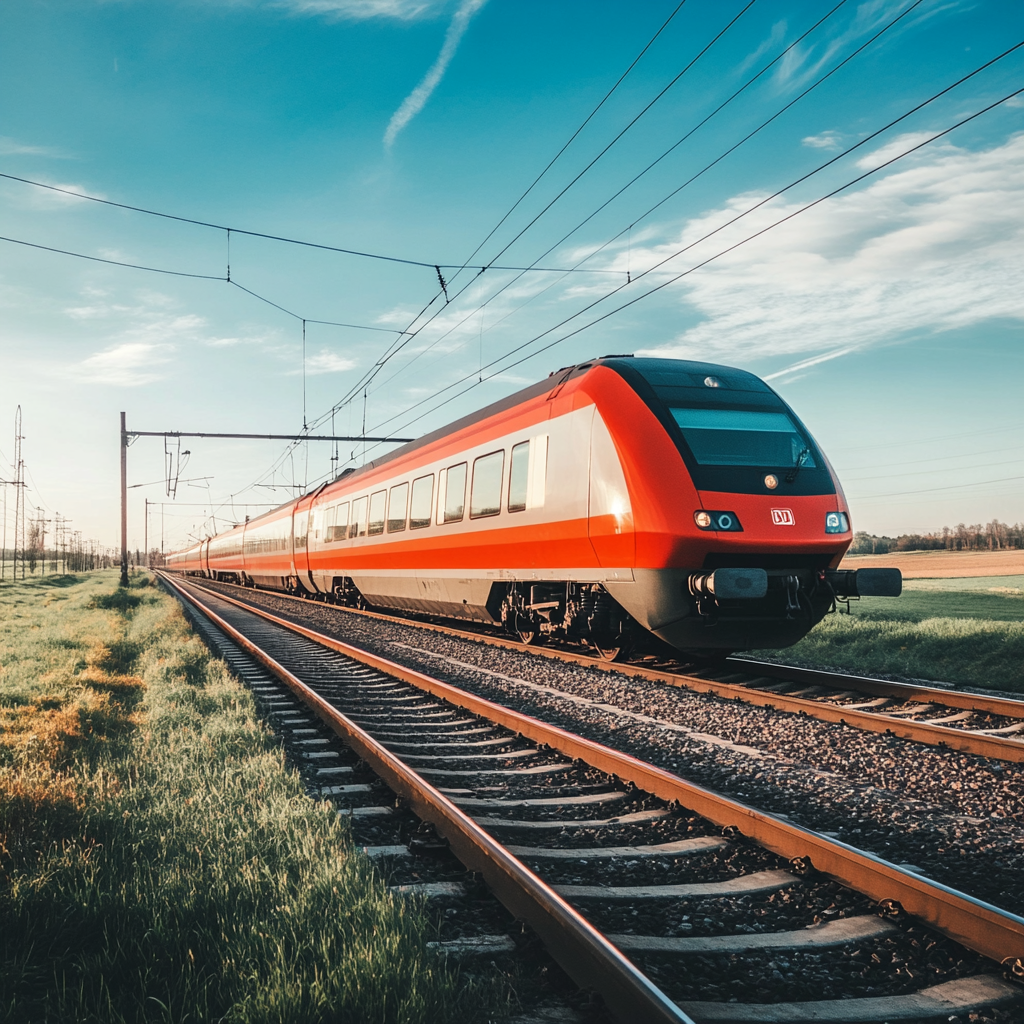Railroad travel has its own special magic – it combines the slowness of movement, the enchanting rhythm of the wheels, the view outside the window that slips into the past, and the feeling that you are between worlds. And it all begins with one sound – the drawn-out, deep and meaningful whistle of a locomotive. You hear it – and it’s as if you cross the line internally, leaving behind everyday life, familiar space, and haste. All that remains is the path, its inner silence, the conversations of random fellow travelers, and landscapes that will never return.
The horn as a symbol of departure where the road begins
The whistle of a locomotive— is not just a technical signal. It is a sonic ritual that heightens the senses and literally announces: “It’s time.” It breaks the morning haze, fills the evening platform with vibration, it is unmistakable. Ittranslates a person’s internal state into another dimension— from waiting to movement, from everyday life to wandering. That is why it is often used in films as a symbol of something important: a beginning, a parting, or, on the contrary, a return home.
Many passengersIt is noted that it is the horn that remains in the memory longer than landscapes or station names. It accompanies both the first step of a child into a train car and the last trip of an elderly traveler. It is always individual – it conveys the power, direction, even the mood of the trip.The horn seems to speak its own language, and everyone hears something of their own in it: a call to freedom, a messenger of fate, an invitation to the unknown, or a reminder of home.
The landscapes outside the window are like a living canvas of the road
Changing the picture outside the train window— this is one of the main components of the uniqueness of rail travel. It is here that a person observes howNot only geography is changing, but also the rhythm of life. Sometimes villages with crooked shutters flash by, sometimes quiet swamps with lonely herons, sometimes a factory landscape suddenly emerges, or the steppe recedes to the horizon. The passenger is like a viewer of an endless but unique film, in which he himself is the main character.
Here are some reasons why the visual experience during a train journey is especially valuable:
- Slow rhythm– allows you to see more than when traveling by car or plane.
- Variety of routes– one road can go through forests, fields, cities and mountains.
- Feeling of security– you are inside, but still as ifare you participating?in the landscape.
- Window Frame Aesthetics— the carriage window turns the landscape into a work of art.
- Weather as a mood— rain, sun, sunset make the picture unique.
- Tactility of memories— visual scenes are imprinted in memory along with sounds, smells and thoughts.
- Privacy— the traveler can observe without interfering, as if from another dimension.
These visual stories become the basis of memories. When a person hears the word “train” years later, he remembers not the speed or the station, but thewhat I saw outside the window.
Passengers and their stories as part of a common route
Any railway carriage— is a miniature universe in which random people becomepart of one big story. Some are silent and looking out the window. Some are talking non-stop, sharing their biography. Some are knitting, some are reading, some are writing a letter by hand. All of themnot familiar, but united by space and directionThe train has one common goal, and against this background, individual, human goals are born – to get there, to find, to escape, to remember.
Stories fellow travelers are often thereunexpected, sincere and piercing. One man can tell about his childhood spent at stations; another woman – about how a train saved her life during the evacuation; a teenager – about his dream to get to Baikal. Sometimes one phrase is enough to remember the meeting forever.People on the train open up faster, than in other places, perhaps because they know that upon arrival everyone will disperse, and no one has to be anyone else. It gives freedom – to be yourself, not to play a role, just to go and talk.
Stations as landmarks of a personal journey
Each stop is not just a geographic point. It ismilestone, a small chapter of a big story. Stations greet you in different ways: with wind, with the smell of baking, with the shouts of conductors, with silent emptiness. At large transfers you can hear languages that are not typical for the region, and at small stops you can encounter silence that is broken only by that very same horn.Stopping at a station is like a pause in a song, it sets the next chord, directs the thought.
For many travelers, the station can become a place of memories. Someone kissed for the first time here, someone said goodbye to their parents, someone just saw an incredible sunset. These points are not just on the map – theylive in a personeven decades later. So returning to a familiar station can cause an unexpected wave of feelings – as if you’re not just back, butreturned time.
Letters from the Rails as a Way to Preserve Memories
Railway travel inspired fixing the moment. Unlike air or auto formats, there is time here – to write down, think, sketch. People leadtravel diaries, send postcards directly from trains, take photos with random fellow travelers or even record audio with beeps and voices. All this not for the sake of an archive – but so that one dayremember that feeling, which accompanied the path. Not the goal, not the sights, butexactly the road.
Modern technologies have only expanded the possibilities. Now you can run a Telegram channel from a train, share footage in real time, save memory feeds. But what is truly valuable remains what has been donein the silence of the carriage, alone with myself. Write down a thought when there is an evening forest outside the window. Draw a route map on a napkin. Rewrite someone’s story. All this turns a rail journey intolife document— a personal chronicle of wanderings, where the beep remains the first word, and memory is the last point.
Train— is not just a means of transportation. It is a form of life, a way of feeling, thinking, rhythm. Rails are like lines of fate, leading not only from city to city, but also from one state to another.The whistle of a locomotive— as the beginning of a chapter, as a call to rethink. Remembering trips, a person also remembers himself: at that moment, in that window, in that silence. These are not just chronicles of a route — these are chronicles of an inner journey.With every trip we take away not only photos, but also emotional traces. We hear the music of the rails, see living pictures, and learn lessons from random fellow travelers. We learn to be attentive, observant, and grateful for the moments between stations. And that’s the whole point. Not the arrival, not the destination, but how wewe are moving, what we hear, what we see, what we feel. The train teaches us to be here and now. And if suddenly one day you hear the whistle again – close your eyes, remember the path. And know: it continues as long as there are rails under your feet and memory in your heart.
Because it gives a unique sense of travel, allowing you to see and feel more, rather than just getting from point A to point B. The train offersslowdown, which helps to experience the journey in its entirety.
The best way is to record your impressions along the way: keep a diary, take photos, talk to fellow travelers, sketch station scenes. These personal “letters from the rails” preserve the essence of the journey better than any souvenir.

